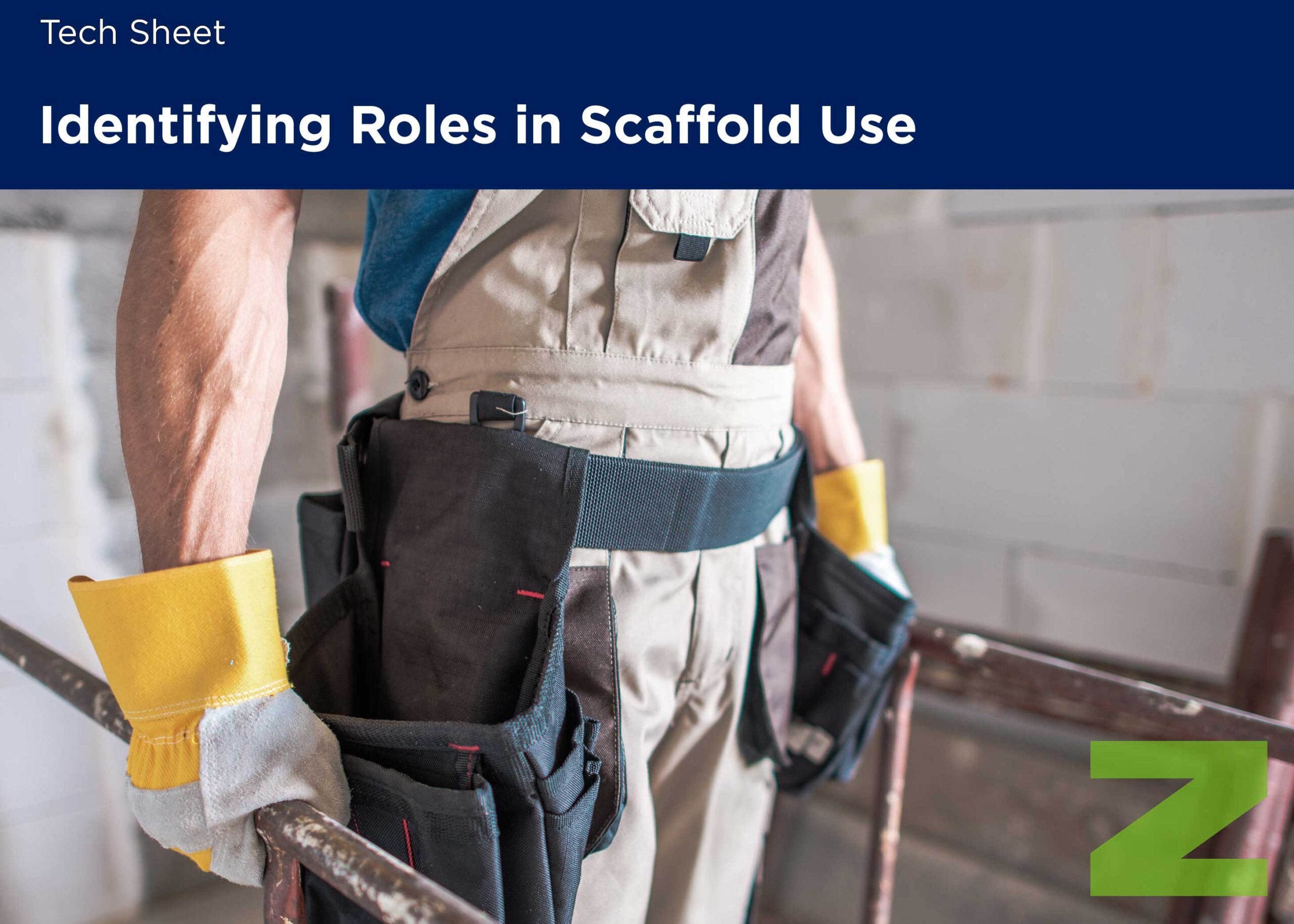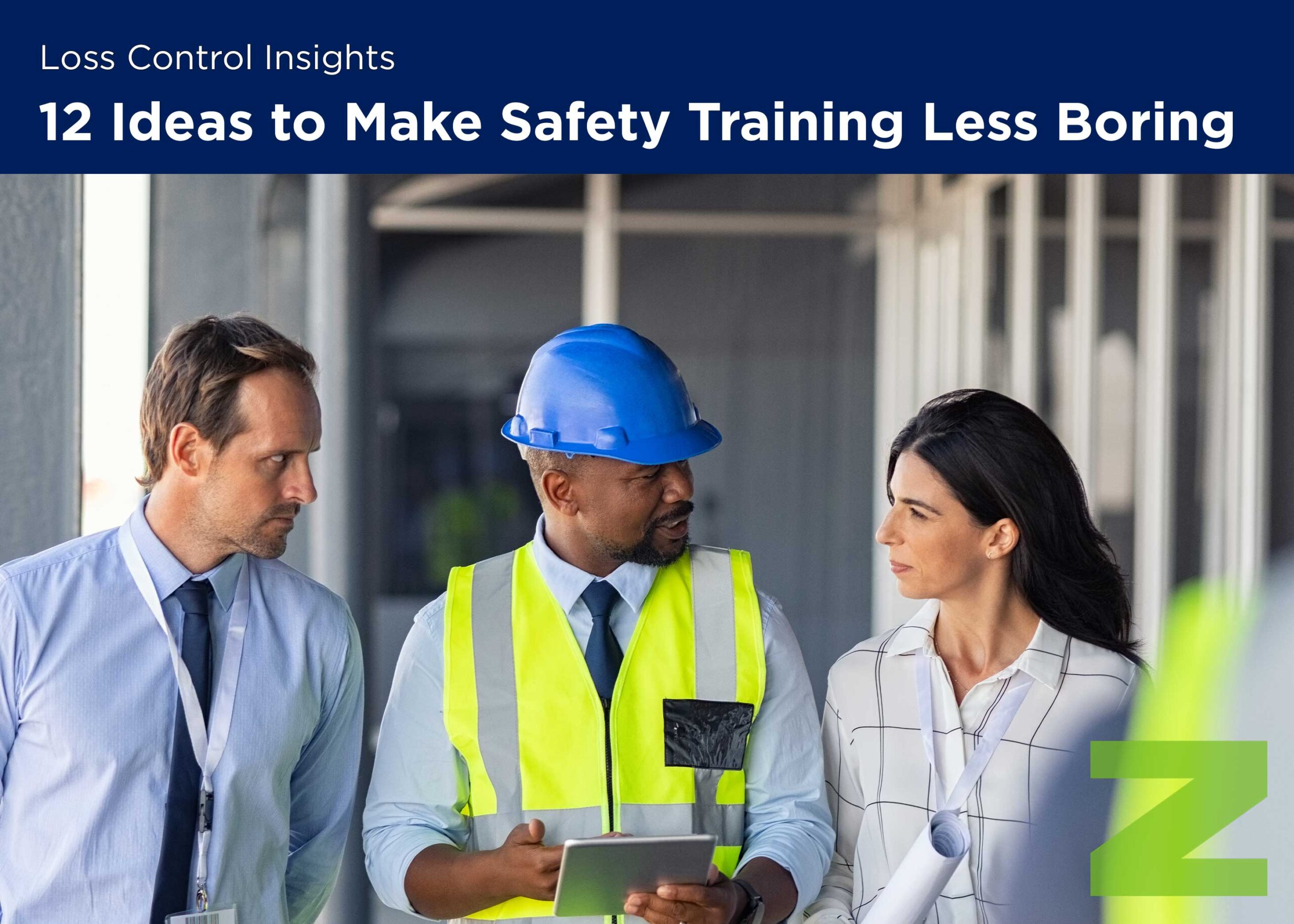Tech Sheet
Identifying Roles in Scaffold Use
An estimated 2.3 million workers, or 65% of the construction industry, frequently use scaffolds on the job. OSHA estimates that informed employers and workers in compliance with scaffold safety standards could prevent 4,500 accidents and 50 deaths every year. These standards identify specific roles for the safe erection, dismantling, and use of scaffolds.
Competent Person
OSHA requires that a competent person train any employee involved in erecting and/or dismantling scaffolds. A competent person is defined as one who is capable of identifying existing and predictable hazards, and has authorization to take prompt corrective measures to eliminate them. Their duties include:
• General
-Select and direct employees who erect, dismantle, move, or alter scaffolds. f
-Determine if it is safe for workers to be on a scaffold during storms or high winds, and ensure that a personal fall arrest system protects them.
• Training
-Train employees involved in erecting, disassembling, moving, operating, repairing, maintaining, or inspecting scaffolds to recognize associated work hazards.
• Inspections
-Inspect scaffolds, ropes and components for visible defects before each work shift and after any incident that could affect structural integrity, and authorize prompt corrective actions.
- Suspension Scaffolds f Evaluate direct connections to support the load. f Evaluate the need to secure two-point and multiple-point scaffolds to prevent swaying.
- Erection and Dismantling
- Determine the feasibility and safety of providing fall protection and access.
- Scaffold components
- Determine if a scaffold will be structurally sound when intermixing components from different manufacturers.
- Determine if galvanic action has affected the capacity when using components of dissimilar metals.
Qualified Person
Scaffolds must be designed by a qualified person and be constructed and loaded in accordance with that design. OSHA defines a qualified person as one who possesses a recognized degree, certificate, or professional standing, or has extensive knowledge, training, and experience demonstrating their ability to resolve problems related to the subject. Their duties include:
• Preplanning
-Determining the type of scaffold necessary for the job
-Determining the maximum load of the scaffold
-Assuring a good foundation
-Avoiding electrical hazards
- Training
- Train employees working on scaffolds to recognize the hazards associated with the type of scaffold being used and how to control or minimize those hazards.
- Suspension Scaffolds
- Design the rigging for single-point adjustable suspension scaffolds.
- Design platforms on two-point adjustable suspension types that are less than 36 inches wide to prevent instability.
- Make swaged attachments or spliced eyes on wire suspension ropes.
- Components and Design
- Design scaffold component construction in accordance with the design.
Engineer
The scaffold standard requires the design services of a registered professional engineer for certain situations, including:
- The direct connections of masons’ multi-point adjustable suspension scaffolds
- Scaffolds that will be moved when employees are on them
- Pole scaffolds over 60 feet in height
- Tube and coupler scaffolds over 125 feet in height
- Fabricated frame scaffolds over 125 feet in height above their base plates
- Brackets on fabricated frame scaffolds used to support cantilevered loads in addition to workers
- Outrigger scaffolds and scaffold components





